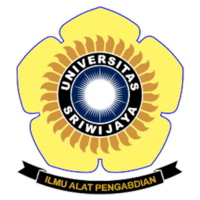Maskulinisasi Ikan Cupang (Betta splendens) Menggunakan Air Kelapa (Cocos nucifera) melalui Metode Perendaman Embrio
Abstract
Dwinanti et al, 2019. Siamese Fighting Fish (Betta splendens) Masculinization Using Coconut Water (Cocos nucifera) With Immersion Embrio Method. pp. 74-81.
Most of male ornamental fish have attractive color than female including Siamese fighting fish. Thus, male production is more preferable by farmer due to high demand on it. Sex reversal is a technology that reverses the direction of genital development from female to male (masculinization) or male to female (feminization). This research aims to determine the sex ratio of male fish resulting from immersion of Siamese fighting fish embryo with coconut water. This research was conducted at Basic Fisheries Laboratory Program Study of Aquaculture, Faculty of Agriculture, Sriwijaya University on February-March 2018. This research used randomized complete design (RCD) method with three treatments and three replications with 0% (control), 10% and 20%. The results showed concentration 10% resulted the best male percentage of siamese fighting fish i.e 91.06%. The highest hatching percentage was 90%, (at 0% concentration). The highest percentage of survival rate of Siamese fighting fish was 89% (concentration 20%). Embryonic immersion with coconut water can affect the percentage of hatching. The concentration at >10% didn’t give a good result of hatching percentage of siamese fighting fish. Water quality during maintenance were temperature 27.3-28oC, pH 5.9-6.3 and DO 4.2-5 mg.L-1.
Most of male ornamental fish have attractive color than female including Siamese fighting fish. Thus, male production is more preferable by farmer due to high demand on it. Sex reversal is a technology that reverses the direction of genital development from female to male (masculinization) or male to female (feminization). This research aims to determine the sex ratio of male fish resulting from immersion of Siamese fighting fish embryo with coconut water. This research was conducted at Basic Fisheries Laboratory Program Study of Aquaculture, Faculty of Agriculture, Sriwijaya University on February-March 2018. This research used randomized complete design (RCD) method with three treatments and three replications with 0% (control), 10% and 20%. The results showed concentration 10% resulted the best male percentage of siamese fighting fish i.e 91.06%. The highest hatching percentage was 90%, (at 0% concentration). The highest percentage of survival rate of Siamese fighting fish was 89% (concentration 20%). Embryonic immersion with coconut water can affect the percentage of hatching. The concentration at >10% didn’t give a good result of hatching percentage of siamese fighting fish. Water quality during maintenance were temperature 27.3-28oC, pH 5.9-6.3 and DO 4.2-5 mg.L-1.
Full Text:
PDFArticle Metrics
Abstract view : 2191 timesPDF - 4227 times
Refbacks
- There are currently no refbacks.

